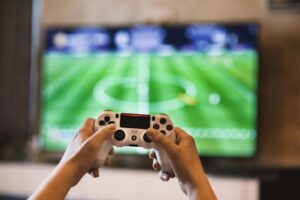In today’s digital world, children are surrounded by screens—tablets, smartphones, TVs, and computers. While these devices offer educational and entertainment benefits, they can also interfere with your child's sleep quality. Striking a balance between screen time and healthy sleep is crucial for their overall well-being. This article explores how screen time affects sleep, practical tips for minimizing its impact, and answers common questions parents may have.
How Does Screen Time Affect Sleep?
The Role of Blue Light
Most screens emit blue light, which can suppress the production of melatonin, the hormone responsible for regulating sleep. Reduced melatonin makes it harder for children to fall asleep, leading to delayed bedtimes and shorter sleep durations.
Overstimulation
Watching action-packed videos, playing fast-paced games, or engaging in social media can overstimulate the brain, making it harder for kids to wind down before bed.
Habit Formation
Children who use screens right before bedtime often develop habits that associate devices with relaxation. This dependency can disrupt their natural ability to settle down and fall asleep.
Tips to Balance Screen Time and Sleep
1. Create a Screen-Free Wind-Down Routine
Establish a routine that encourages relaxation without screens at least an hour before bedtime. Activities like reading a book, listening to calming music, or engaging in light stretches can help.
2. Set Consistent Screen Time Limits
Follow the recommendations from organizations like the American Academy of Pediatrics (AAP), which suggests no more than 1-2 hours of recreational screen time for children aged 6 and above.
3. Adjust Screen Settings
Enable blue light filters or night modes on your child’s devices. These features reduce the intensity of blue light, making screens less disruptive to sleep.
4. Keep Devices Out of the Bedroom
Encourage your child to use screens in communal areas. This reduces the temptation to stay up late scrolling or gaming in bed.
5. Lead by Example
Children learn from their parents. Demonstrate good screen habits, such as putting your phone away during meals and avoiding screens before bedtime.
6. Encourage Outdoor Activities
Promote outdoor play and physical exercise during the day. This not only reduces screen time but also helps kids expend energy, making it easier to sleep at night.
FAQs About Screen Time and Sleep
Q1: How long before bed should my child stop using screens?
It’s best to limit screen use at least 1-2 hours before bedtime to give their brain time to relax and melatonin production to normalize.
Q2: Can educational apps or e-books disrupt sleep?
Yes, even educational apps can interfere with sleep if used close to bedtime, as they still emit blue light. Try physical books or audiobooks instead.
Q3: Is blue light the only factor affecting sleep?
No, overstimulation from engaging or exciting content can also delay sleep. Screen habits and the type of content matter just as much as blue light exposure.
Q4: What are some good alternatives to screens before bed?
Quiet activities like reading, drawing, storytelling, or doing puzzles are excellent screen-free alternatives to help your child wind down.
Q5: How can I enforce screen time rules without conflict?
Set clear boundaries and involve your child in creating a daily schedule that includes designated screen-free periods. Positive reinforcement, such as praise or small rewards, can also help encourage compliance.
Why Sleep Matters for Kids
Adequate sleep is essential for children’s growth, emotional regulation, and cognitive development. Lack of sleep due to excessive screen time can result in:
- Behavioral Issues: Increased irritability, difficulty focusing, and mood swings.
- Poor Academic Performance: Fatigue impacts concentration and memory, making it harder to learn.
- Weakened Immune System: Sleep is vital for maintaining a strong immune response.
By managing screen time effectively, you can help your child develop healthier sleep patterns and overall habits.
Real-Life Examples of Screen Management
Case 1: The Power of Consistency
Liam, an 8-year-old boy, struggled with bedtime because he loved watching cartoons before sleep. His parents implemented a rule: no screens after dinner. They replaced his nightly cartoons with family reading time. Within two weeks, Liam’s bedtime routine improved, and he started falling asleep faster.
Case 2: The Impact of Device-Free Bedrooms
Emma, a 10-year-old, often stayed up late texting her friends. Her parents decided to create a "charging station" in the living room where all devices were kept overnight. Emma initially resisted, but after a month, she admitted that her mornings felt less rushed and her energy levels had improved.
References
- National Sleep Foundation. (2023). How Electronics Affect Sleep. Available at: sleepfoundation.org
- American Academy of Pediatrics. (2023). Screen Time Guidelines for Kids. Available at: aap.org
- Harvard Health Publishing. (2022). Blue Light Has a Dark Side. Available at: health.harvard.edu
- Mayo Clinic. (2023). Children and Screen Time: Setting Limits. Available at: mayoclinic.org
- World Health Organization. (2021). Guidelines on Physical Activity and Sedentary Behavior. Available at: who.int
- Psychology Today. (2022). Why Blue Light is Bad for Sleep. Available at: psychologytoday.com
The Takeaway
Balancing screen time and sleep is a challenge for many parents, but small changes can make a big difference. By setting boundaries, creating screen-free routines, and encouraging other activities, you can help your child enjoy better sleep and healthier habits. Taking proactive steps now will set them up for long-term success in managing their screen use and overall well-being.













